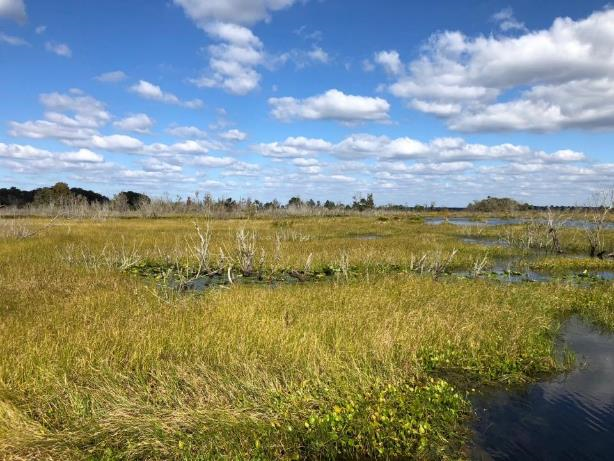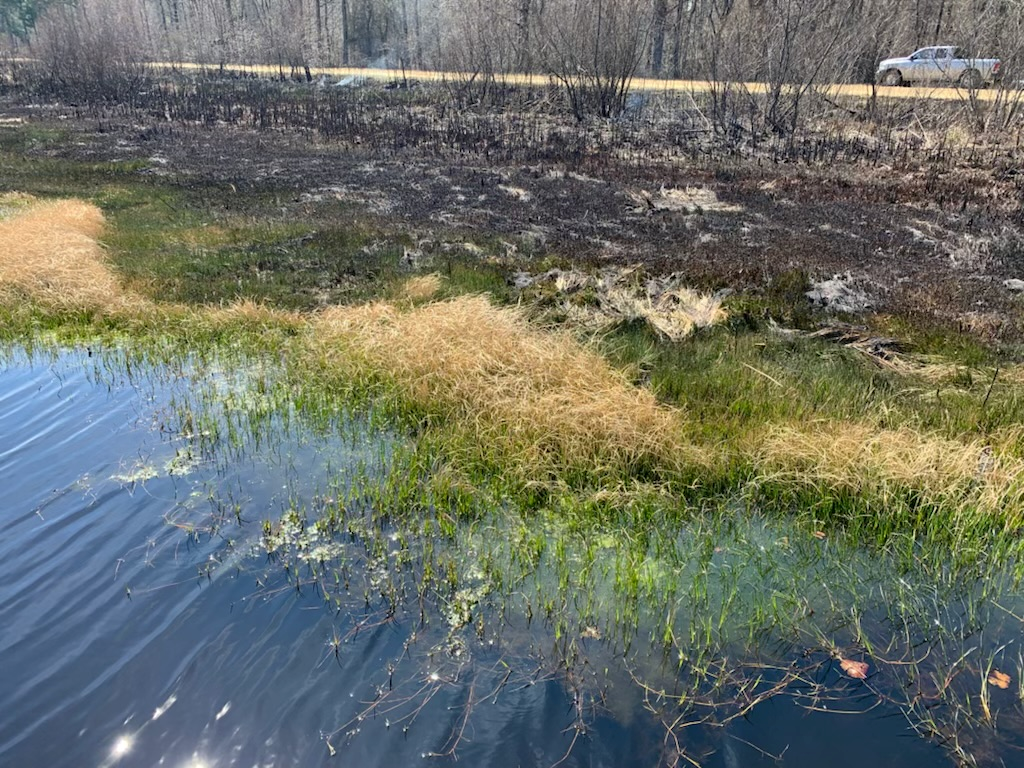Cuban Bulrush
 Cuban bulrush (Oxcaryum cubense) is an aquatic invasive species that is
invading lakes, reservoirs, and other water bodies across the southeastern
United States. The invasive species grows between 1 to 3 feet tall and forms
large floating mats, known as tussocks, that can block boat launches, hinder
navigation along river channels, and negatively affect fishery habitats.
Cuban bulrush (Oxcaryum cubense) is an aquatic invasive species that is
invading lakes, reservoirs, and other water bodies across the southeastern
United States. The invasive species grows between 1 to 3 feet tall and forms
large floating mats, known as tussocks, that can block boat launches, hinder
navigation along river channels, and negatively affect fishery habitats.With support from the Florida Fish and Wildlife Conservation Commission and US Army Corps of Engineers (ERDC), Gray Turnage, Assistant Research Extension professor with GRI has been working to better understand the Cuban Bulrush life cycle to improve upon current plant management practices and develop new control methodologies.
To help cut back on current Cuban bulrush infestations, Dr. Turnage and his research team have identified multiple long-term (>1-year) chemical control measures that resource managers have tested in Mississippi and Florida. Before now, previous management practices have only been able to deliver short term reduction solutions (4-6 weeks) in infestations. They are continuing to refine these new control measures to identify an optimal control strategy that can be used across the southeast.
 Additionally, the team has identified the natural weak point within the life
cycle of Cuban bulrush populations within Mississippi and identified the
optimum time to implement control strategies to help reduce infestations within
the state. They are now working to identify these weak points for populations
in Florida and Louisiana while also trying to predict the environmental cues
(i.e. water temperature, photoperiod, etc.) that trigger plant growth each
year.
Additionally, the team has identified the natural weak point within the life
cycle of Cuban bulrush populations within Mississippi and identified the
optimum time to implement control strategies to help reduce infestations within
the state. They are now working to identify these weak points for populations
in Florida and Louisiana while also trying to predict the environmental cues
(i.e. water temperature, photoperiod, etc.) that trigger plant growth each
year. The team has also implemented prescribed burn methods during the late winter months to remove the dense thatch layer associated with infestations, in turn increasing the likelihood of herbicide contact with emerging foliage that occurs during the spring and early summer months. If implemented, this practice could provide resource managers a low-cost solution to reduce herbicide input while also increasing reduction of the aquatic invasive species across the southeast.
For more information regarding Cuban Bulrush and the work being done by GRI visit our project research page.
